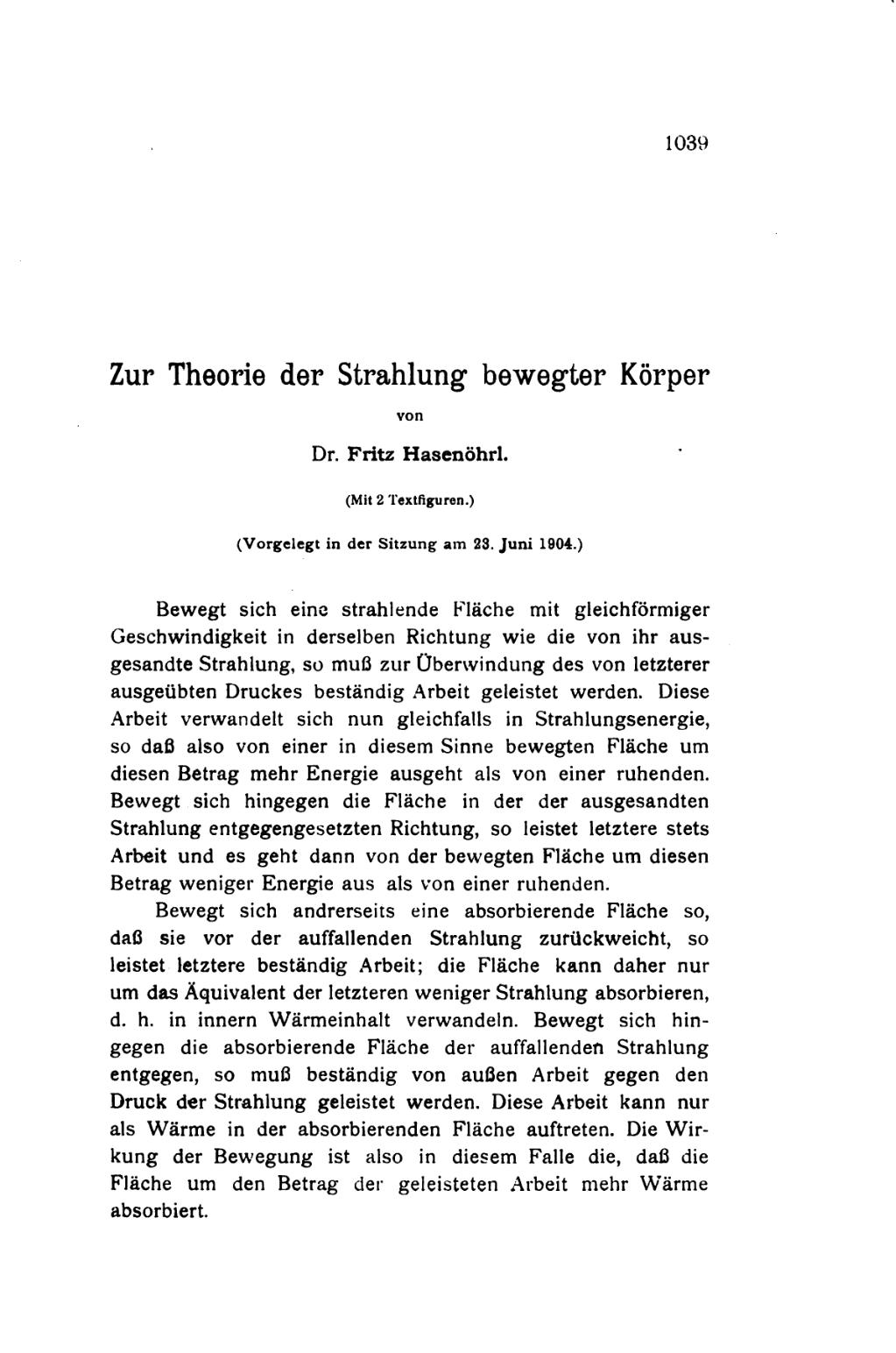On the Theory of Radiation of Moving Bodies.
by
Dr. Fritz Hasenöhrl.
(With 2 text figures.)
(Presented in the meeting on June 23, 1904).
If a radiating surface moves with uniform velocity in the same direction as the radiation emitted by it, then work must be constantly applied to overcome the pressure exerted by the latter. Now, this work is transformed into radiation energy as well, so that more energy of that amount is emanated from a surface moving in this sense, than from a stationary one. However, if the surface is moving in the opposite direction of the emanated radiation, then the latter steadily performs work, thus less energy of that amount is emanated from the moving surface than from a stationary one.
On the other hand, if an absorbing surface is moving, so that it recedes from the incident radiation, then the latter steadily performs work; the surface is therefore only capable of absorbing – i.e. transforming into inner heat – less radiation by the equivalent of the latter. However, if the absorbing surface is approaching the incident radiation, then work from outside must be steadily performed against the pressure of radiation. This work can only occur as heat in the absorbing surface. The effect of motion is thus in this case, that the surface is absorbing more heat by the amount of performed work.
